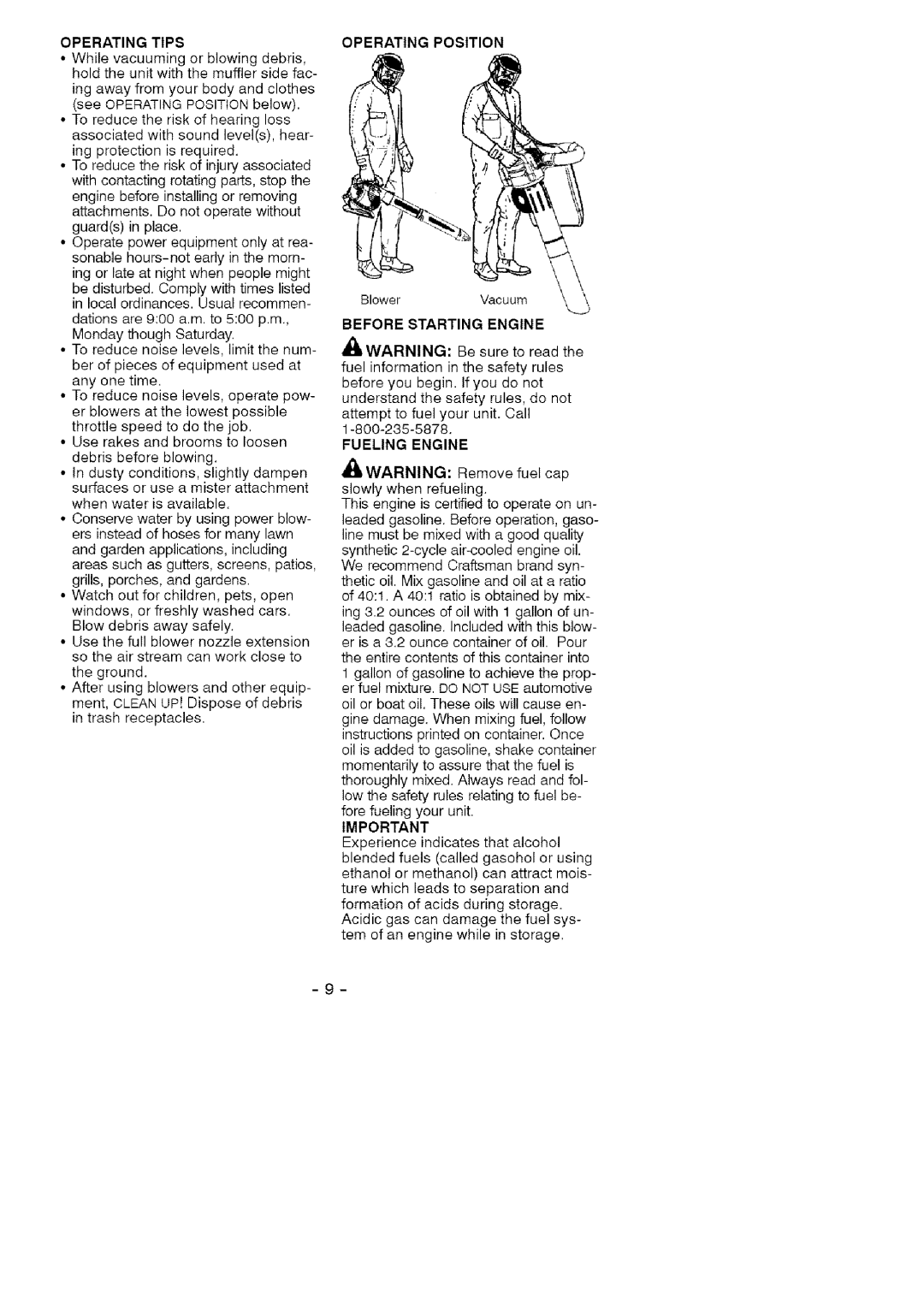
OPERATING TIPS
•While vacuuming or blowing debris, hold the unit with the muffler side fac-
ing away from your body and clothes (see OPERATING POSITION below).
•To reduce the risk of hearing loss associated with sound level(s), hear- ing protection is required.
•To reduce the risk of injury associated with contacting rotating parts, stop the engine before installing or removing attachments. Do not operate without guard(s) in place.
•Operate power equipment only at rea- sonable
be disturbed. Comply with times listed in local ordinances. Usual recommen-
dations are 9:00 a.m. to 5:00 p.m., Monday though Saturday.
•To reduce noise levels, limit the num-
ber of pieces of equipment used at any one time.
•To reduce noise levels, operate pow- er blowers at the lowest possible throttle speed to do the job.
•Use rakes and brooms to loosen debris before blowing.
•In dusty conditions, slightly dampen surfaces or use a mister attachment
when water is available.
•Conserve water by using power blow- ers instead of hoses for many lawn and garden applications, including areas such as gutters, screens, patios, grills, porches, and gardens.
•Watch out for children, pets, open windows, or freshly washed cars. Blow debris away safely.
•Use the full blower nozzle extension so the air stream can work close to
the ground.
•After using blowers and other equip- ment, CLEAN UP! Dispose of debris in trash receptacles.
OPERATING POSITION
BlowerVacuum \
BEFORE STARTING ENGINE
,'_ WARNING: Be sure to read tile
fuel information in the safety rules before you begin. If you do not understand the safety rules, do not
attempt to fuel your unit. Call
FUELING ENGINE
_&WARNING: Remove fuel cap
slowly when refueling.
This engine is certified to operate on un- leaded gasoline. Before operation, gaso- line must be mixed with a good quality synthetic
leaded gasoline. Included with this blow- er is a 3.2 ounce container of oil. Pour
the entire contents of this container into
1 gallon of gasoline to achieve the prop- er fuel mixture. DO NOT USE automotive
oil or boat oil. These oils will cause en- gine damage. When mixing fuel, follow instructions printed on container. Once oil is added to gasoline, shake container momentarily to assure that the fuel is thoroughly mixed. Always read and fol- low the safety rules relating to fuel be- fore fueling your unit.
IMPORTANT
Experience indicates that alcohol blended fuels (called gasohol or using ethanol or methanol) can attract mois- ture which leads to separation and formation of acids during storage. Acidic gas can damage the fuel sys- tem of an engine while in storage.
